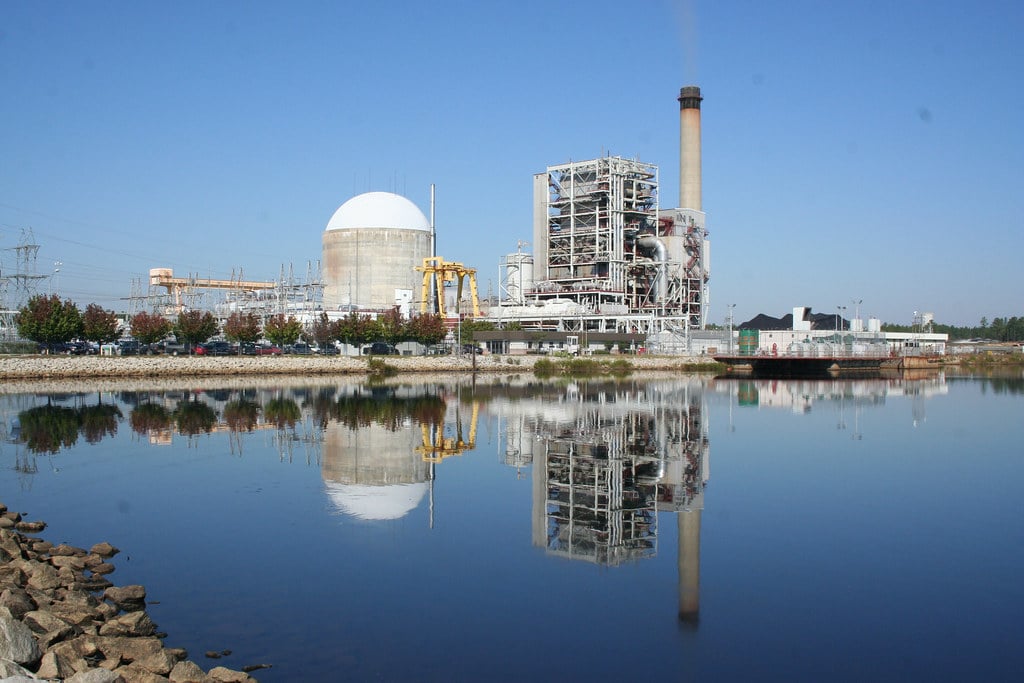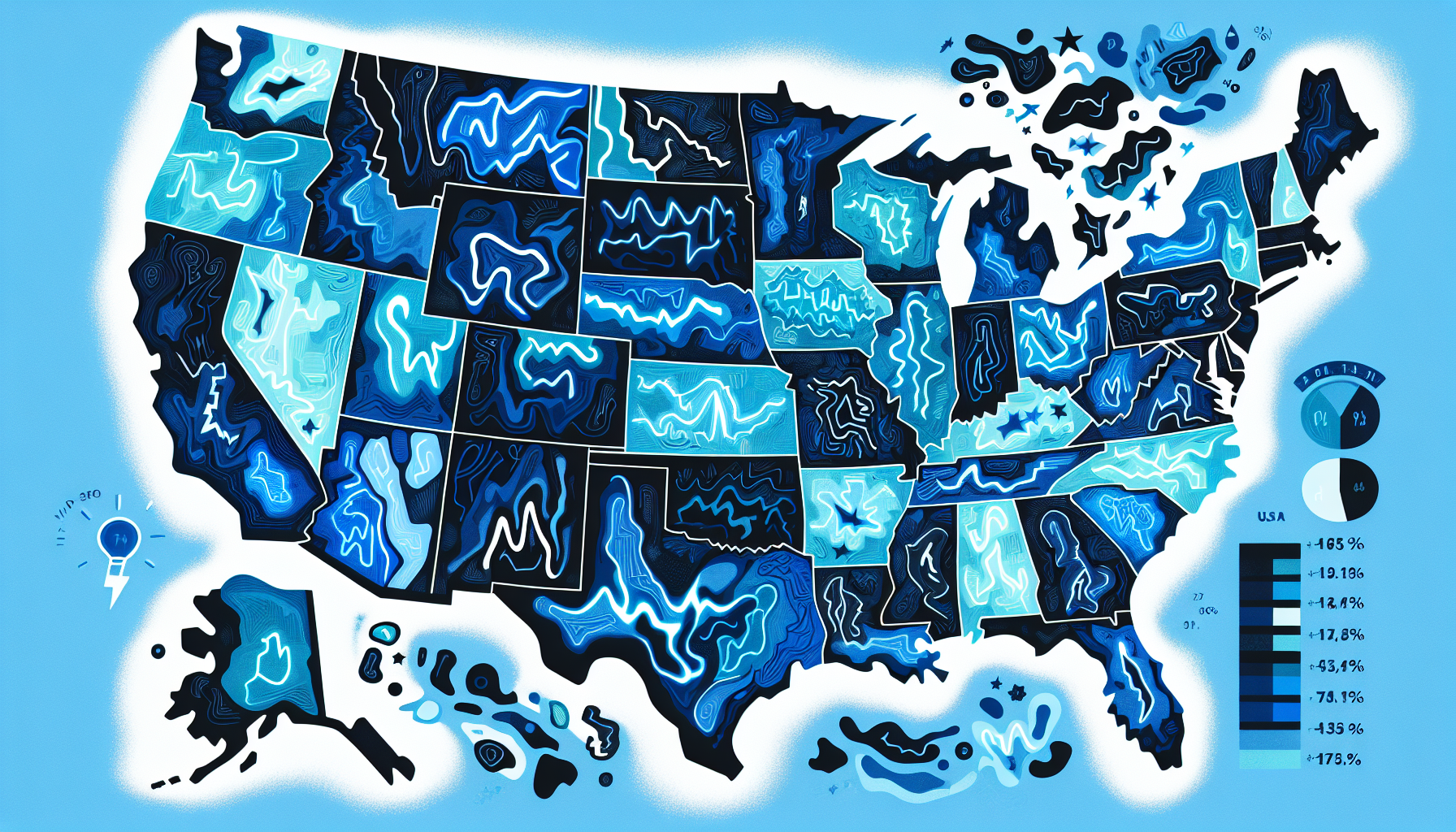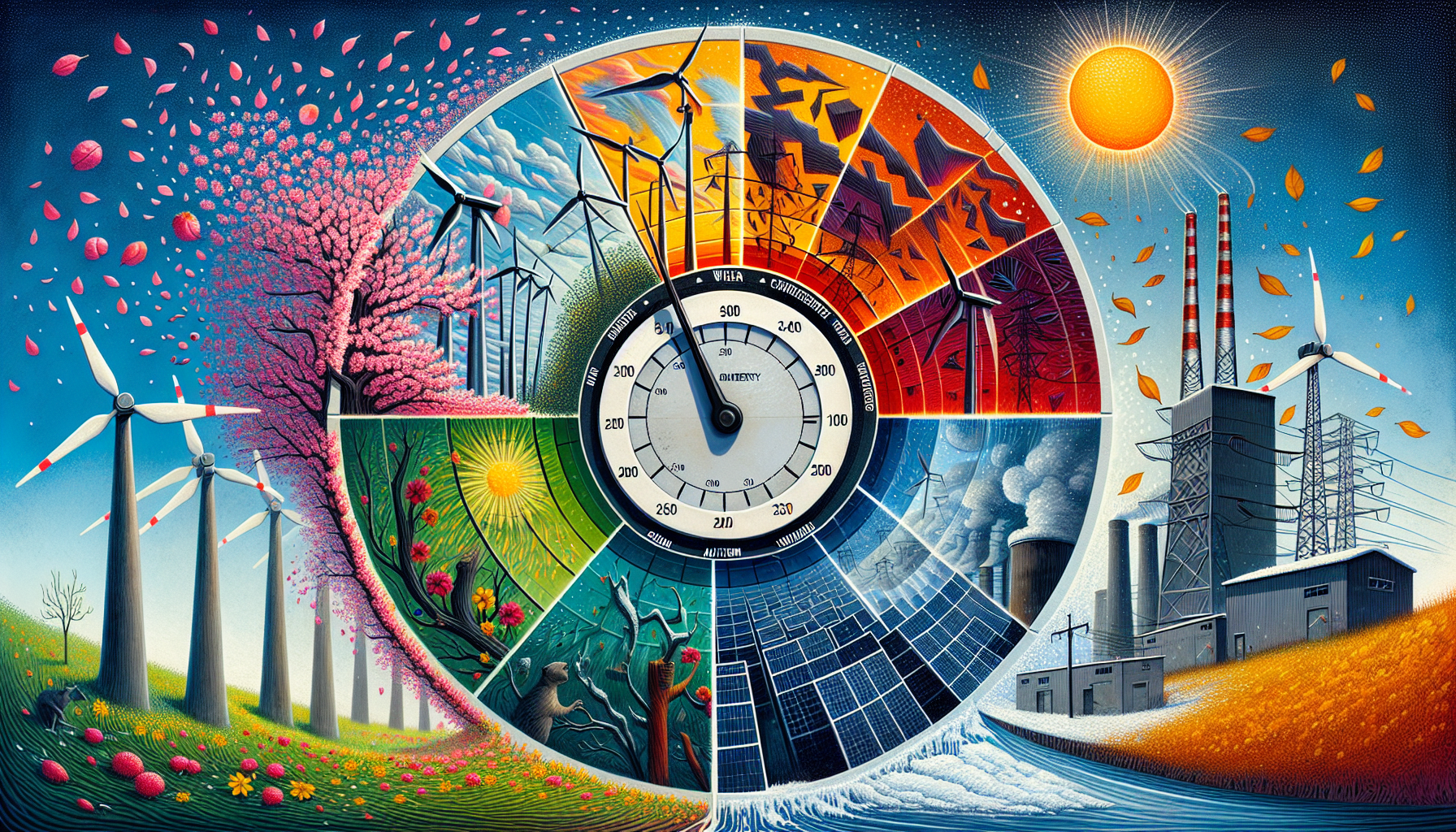Key Takeaways
- Electric rates in the U.S. vary significantly by state due to factors such as resource availability, market regulations, and geographic conditions, with Hawaii having the highest average rate and Louisiana the lowest as of June 2024.
- Several factors contribute to fluctuating electricity prices, including fuel prices, demand patterns, weather conditions, and the type of market (regulated or deregulated), as well as the energy mix used by suppliers.
- Consumers can mitigate rising electricity costs by adopting energy-efficient appliances, insulating homes, and transitioning to renewable energy sources like solar panels, which can provide long-term savings and reduce reliance on the grid.
Understanding Electricity Prices

Electric rates, often taken for granted, are the invisible force powering our modern lifestyle. These rates, defined as the cost per unit of electricity, measure up in cents per kilowatt-hour (kWh) and are a vital part of every household’s monthly expenses. In February 2023, the average residential electricity rate in the U.S. was approximately 23 cents per kWh, indicating stable pricing at that time.
But why should the everyday consumer pay attention to these rates? Simply put, electric rates directly influence the size of the electric bill that lands in your mailbox each month. With the burgeoning energy choice movement, consumers are no longer bound to a single provider and can now explore a variety of energy plans, seeking the most competitive electric rates available.
Overview of the History of Electric Rates
Electricity has been around since the 1800s, but it wasn’t until the early 20th century that it became widely available. At first, electricity was generated from hydroelectric dams and coal-powered plants, but eventually, more efficient methods were developed. By the 1950s, nuclear power plants had become a major source of electricity in many parts of the world.
The cost of electricity has steadily increased over time due to a number of factors, including advancements in technology, economic growth, and changes in policy and regulation.
With technological advances allowing for more efficient generation and transmission of electrical energy comes higher costs for infrastructure investment. As economies grow, demand for electricity also increases which leads to higher prices as supply is unable to keep up with demand.
Changes in government policy and regulation can also have an effect on electric rates; when governments regulate or tax utilities they often pass costs onto consumers through higher fees or additional taxes.

The cost of energy production can also be affected by circumstances beyond our control such as the cost of raw materials used in energy production or weather events that disrupt the production process or transmission lines. This often leads to temporary spikes in electric rates as suppliers scramble to make up for lost energy production time or resources.
All these factors contribute to higher electric rates over time which means that average consumers will see their utility bills go up each year. However, there are ways to mitigate this cost increase by taking advantage of renewable energy sources like solar power and wind which tend not to fluctuate as much as traditional sources like coal or oil do.
Consumers should investigate what options may be available to them locally so that they can find a way to save money on their monthly bills while still getting reliable power.
Average Electricity Prices by State

Stepping across the map, one finds that electric rates are not a one-size-fits-all affair; they vary widely by state due to a kaleidoscope of factors. Here are some examples:
- Hawaii has been at the pinnacle with an average electric rate of 32.76¢ per kWh
- Louisiana enjoyed one of the lowest at just 9.37¢ per kWh as of June 2024
- Energy plans in Texas offered an average price of 11.36¢ per kWh
- Massachusetts had surging rates, which soared to 21.11¢ per kWh
Such variations are not merely geographic quirks but are deeply rooted in each state’s energy choice, resource availability, and specific zip code regulations, especially in the New England region, including Rhode Island and West Virginia.
Factors Contributing to Increasing Costs
Peering under the hood, several factors grease the wheels of fluctuating electricity prices. Some of these factors include:
- Weather wields a significant impact; extreme temperatures spike the demand for heating and cooling, while rain and snow can bless us with abundant, low-cost hydropower.
- Fuel prices, particularly for natural gas and petroleum, can be erratic, surging during peak demand or when weather calamities disrupt supply chains.
- Demand for electricity follows the rhythm of daily life, peaking in the afternoon and early evening, thus pushing costs upward.

Additionally, the type of market—regulated or deregulated—along with the energy mix used by suppliers, sets the stage for the final electric rates consumers face.
Comparing Fixed-Rate and Variable-Rate Plans
In the marketplace, consumers stand at a crossroads: to lock in a fixed rate or ride the wave of a variable rate. Fixed-rate plans promise a steadfast rate per unit of energy over the life of the contract, often ranging from six months to three years, buffering consumers from market volatility.
On the flip side, variable-rate plans, free from long-term commitments, fluctuate with the market’s ebb and flow, offering potential savings during times of lower rates but posing a risk during rate spikes. To make an informed decision, it’s essential to understand the rate schedule associated with each plan.
When you compare rates, it’s essential to weigh the predictability of a fixed rate against the flexibility and potential lower rates of a variable plan.
Changes in Policy, Regulation, and Energy Production Methods
As the energy landscape morphs, so do electric rates, influenced by the tectonic shifts of policy, regulation, and energy production methods.
Government policies can sway costs through renewable energy incentives or stringent environmental regulations, while advances in energy production—shifting from coal and oil to wind and solar—necessitate hefty investments in new infrastructure. These changes get passed down to consumers, manifesting as higher bills.
Meanwhile, consumers can mitigate these changes by:
- Insulating their homes
- Altering energy usage behaviors
- Investing in renewable resources like solar power to curb their reliance on the grid and potentially lower their bills.
Impact on Average Consumers and Their Wallets
Rising electric rates cut deep into the fabric of everyday life, with many households grappling to keep up with ballooning energy bills. The strain on wallets is palpable, especially as the cost of living climbs. For those teetering on the financial edge, the consequences can be severe—facing disconnections or steep late fees.
Thankfully, a silver lining exists in the form of assistance programs and smart technologies that help manage consumption, along with proactive steps like embracing renewable energy sources to keep electric bills in check.
Seasonal Variations in Electricity Prices

Like the seasons, electric rates are in a perpetual dance, ebbing and flowing with the calendar.
Summer’s scorching heat often drives rates to their yearly zenith due to cooling demands. Yet, nature can also be a benefactor, with rain and snow fueling cost-effective hydropower generation.
Conversely, droughts can sap this resource, inflating rates as a result. These seasonal shifts not only affect regions differently but also influence the pricing strategies of suppliers and the choice of energy plans.
What Can be Done to Lower Electricity Costs

Amidst the current of rising electric rates, consumers can steer towards more manageable bills. Energy-efficient appliances and behavior adjustments provide a significant return on investment, conserving energy and trimming costs. Insulation and weatherization act as a fortress, shielding homes from energy wastage.
For those looking to make a more significant leap, transitioning to renewable energy sources can offer a path to sustained savings, with green energy plans and solar installations leading the charge.
Deregulated Energy Markets: Opportunities and Challenges
The concept of a deregulated energy market might seem like a panacea, offering the seductive promise of choice and competitive rates. Yet, it is a landscape of both opportunity and risk. Deregulation has reshaped the energy market in many states, such as Texas, New Jersey, and New Mexico, fostering competition and potentially leading to lower rates and innovative clean energy solutions in a deregulated market.
However, the flip side of this coin reveals the potential for unforeseen complications. Consumers must navigate these markets with a discerning eye, weighing the prospects of savings against the perils of market fluctuations.
Technological Advances and Economic Growth
Technology and economic growth have both played a major role in the increasing cost of electricity over time. Technological advances such as the development of smart grids, distributed generation, and renewable energy sources like solar and wind power have allowed for more efficient production and transmission of electrical energy. This has enabled electric utilities to reduce their losses in transmission which has helped keep costs low but has also increased infrastructure investment which then leads to higher rates for consumers.
The economic growth that comes with population increases or economic activity also plays a role in electric rate increases. As demand grows, suppliers must invest in new infrastructure such as power plants or transmission lines in order to meet this growing need and can pass on these costs through higher electric rates. Additionally, fluctuations in the price of raw materials used for energy production can contribute to changes in electric prices that can affect consumers’ bills.

The cost of electricity will continue to rise due to technological advances and economic growth, but there are ways to mitigate this increase. Consumers should take advantage of renewable energy sources like solar power or wind which tend not to fluctuate as much as traditional sources like coal or oil do.
Investing in innovative technologies is key to keeping costs down while still providing reliable power to customers. Policies that limit pollution emissions associated with energy production can also help reduce costs by allowing utilities to operate more efficiently while still meeting environmental standards.
By understanding the different factors that contribute to electric rate increases, consumers can be better prepared when it comes time to pay their monthly utility bills.
The Futured of Electricity Rates
Gazing into the crystal ball, the future of electric rates appears to be a mosaic of shifting trends and emerging technologies. As the green energy revolution gains momentum, fueled by policy incentives and technological advancements, electric rates could see a decline from their current highs.
Smart grids and a more efficient energy landscape may herald a new era of stability and affordability in electricity costs. Such developments offer a beacon of hope for consumers seeking to:
- Manage their energy expenses effectively
- Reduce their carbon footprint
- Take advantage of renewable energy sources
- Benefit from advanced energy management technologies as we propel into the future.
How Solar Can Help Alleviate Electricity Price Hikes

Harnessing the sun’s power, solar energy stands as a formidable ally in the battle against rising electric rates. Residential solar panels, now more accessible and cost-effective than ever, are becoming a mainstay in homes across the nation. Solar’s allure is multifaceted—offering:
- Environmental benefits
- Potential for significant savings on electric bills
- Opportunity to become a ‘prosumer’ by selling surplus energy back to the grid.
As the success stories of solar-friendly regions like Las Vegas show, with the right incentives and programs in place, the initial investment in solar can pay dividends in both financial savings and energy independence.
Interested in going solar and lowering you electricity bills permanently? Get a free quote from Sun Source Energy today!
Summary
As we conclude this electrifying journey, it’s clear that the story of electric rates is one of complexity and constant change. From the myriad of factors influencing prices to the strategies consumers can employ to keep costs down, the power to navigate this dynamic landscape is now in your hands. Let this knowledge spark a transformation in how you consume and control energy, leading to a brighter and more sustainable future.
Frequently Asked Questions
What has caused the average residential electricity rate to increase?
Factors such as fluctuating fuel prices, higher demand during peak hours, extreme weather conditions, and investments in new, clean energy infrastructure have contributed to the increase in the average residential electricity rate. These factors have collectively led to the rise in electricity costs.
How do energy deregulation and energy choice affect electric rates?
Energy deregulation and energy choice can lead to increased competition among suppliers, potentially lowering prices and increasing renewable energy adoption, but it also introduces the risk of price volatility and requires consumers to be more proactive in managing their energy choices.
Can insulating my home really lower my electric bill?
Absolutely, insulating your home can lead to a noticeable reduction in your electric bill by reducing the need for heating and cooling, ultimately preventing energy waste and lowering expenses. Weatherizing your home can save up to 20% on heating and cooling costs.
Is investing in solar panels a cost-effective way to reduce electricity costs?
Yes, investing in solar panels can be a cost-effective way to reduce electricity costs over time, as they often pay for themselves within about 10 years through savings on electric bills and continue to provide cost savings long after.
What are the risks associated with variable-rate energy plans?
Variable-rate energy plans offer flexibility and potential savings, but they entail the risk of increased rates when market prices rise, potentially leading to unexpectedly high electric bills. Be cautious when considering such plans.






